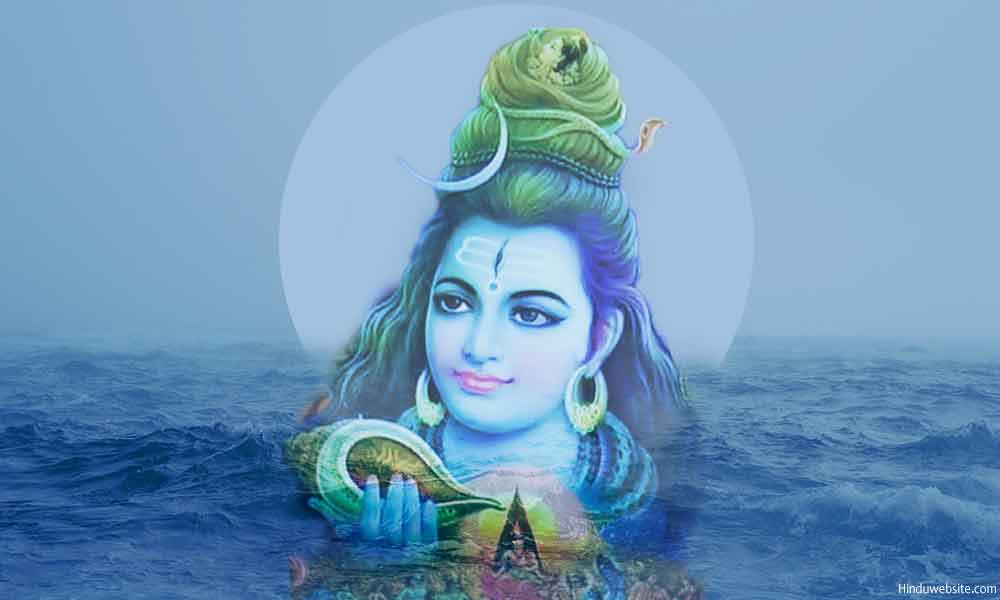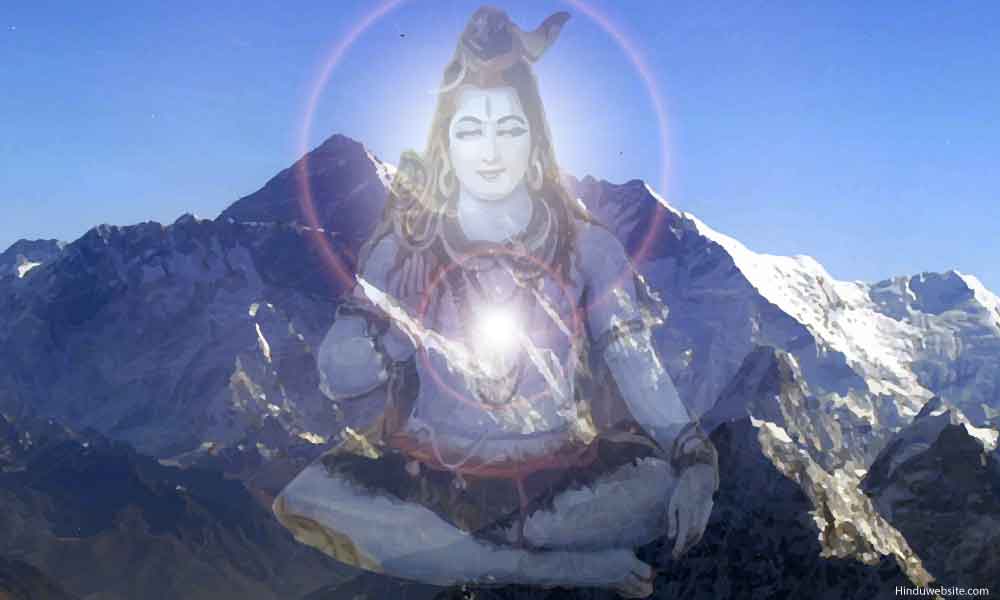
Significance of Lord Shiva

Of all the Hindu Gods none appealed to the emotions of a Hindu mind as much as Lord Shiva (also spelled as Siva), the dweller of the mountains and the bearer of the trident, who with His third eye symbolizes the all knowing awareness of the very Brahman.
Although universally acknowledged as one of the trinity gods of Hinduism, to His followers, He is Maheswara, representing the Trinity all by Himself, His different aspects manifesting themselves as the creator, preserver and destroyer of the worlds He creates. Symbolically He is worshipped as Lingeswara, which name stands more for His creative prowess than sexual.
Historians believe that He was a pre-Vedic god who was admitted into the Vedic Pantheon because of His immense popularity among many non-Aryan tribes. There is a theory that the seated yogi found on the seals of Indus Valley Civilization, was a prototype of Lord Shiva only. References to Him are found in the Rigveda.
In the Mahabharata we come across several references to Him. Both Arjuna and Krishna worshipped Him and obtained favors from Him. In the Ramayana too we come across several references to Him. Sage Valmiki depicted Ravana, the demon king and chief villain of the epic, as a great devotee and daily worshipper of Lord Shiva. It is believed that worship of His icons was widely prevalent as early as 2nd or 3rd Century B.C.,.
With the popularity of Saivism a great deal of literature grew around Him, which came to be recognized as Agama literature. So great was His popularity and fame that Agama literature was placed on equal footing to even the Vedas by His followers.
In the Svetavatara Upanishad He was elevated to the status of Brahman, by the sage who composed it, after he had a vision of Lord Shiva as the Absolute and Supreme Brahman. Saivism as a popular movement took shape mainly in South India because of the patronage of the Pallavas and the dedicated work of many great Tamil Saints, who built enormous bhakti or devotional literature in His honor and made His name a household name.
Megasthanese mentioned the worship of Siva in his book Indika. So did Patanjali, the composer of Yoga Sutras. A great devotee of Siva named Lakulisa lived some time during the early or pre Christian era and founded the Pasupatha sect, making in the process, Saivism a very popular movement in the sub-continent. Two great rulers of ancient India, Kanishka and Harshavardhana were His great followers. In the south the Cholas built many temples in His honor
He is known by many names and tittles. As a god of anger, He is Rudra, the Red One, feared by one and all. As Kailasapathi, He is the Lord of Kailash, His Abode in the Himalayas. As Purusha, He is Iswara Himself. As the Lord of the beings, He is known as Pasupathinath. As the husband of Uma, the Mother Goddess, He is known as Umapathi or Parvathipathi.
As the bearer of the sacred river Ganges, He is known as Ganagadhar. Because of His matted hair, He is dearly called as Jatadhari, by His ascetic followers. As a perfect being He is Siddheshwar. With His Trident in His hands, He became popular as heroic and fearless Trisuladhari. As the world teacher, He was eulogized as Dakhshinamurthi by Adi Shankara in his famous book, "Hymns to Dakhshinamurthi".
To the connoisseurs of art , He is well known as Nararaja, master of all dance forms. As the perfect Yogi, He is credited with the source of all knowledge concerning the various yogas. Such was His prowess and divinity, that Lord Vishnu in His incarnations as Rama and Krishna, worshipped Him with great reverence. He was dearer not only to gods but also to demons.
Many demons like Ravana and Bhasmasur were His ardent followers, to whom He gave several boons out of His unbound love and in the process invited great trouble for Himself and for others. Ever willing to help those who are in distress, He saved the worlds and all the gods by partaking Halahal during the churning of the oceans.
It is interesting to note that while He is worshipped as a Sex-God by Tantrics, He is also known for destroying the physical form of Cupid with His third eye when the latter tried to disturb Him during His meditation. Men and women love Him alike for his unsurpassed qualities of love and generosity. Even today many young and unmarried girls in rural India worship Him and pray to Him seeking a devoted husband like Him.

Because of His close association with Vishnu, He is also known as Hari Har. Combining in Himself both the male and female aspects of creation, He earned the popular name of Ardhanariswara. As rider of the Bull Nandi, He is known to the world as Nandiswara. Loved by His children Ganesha and Skanda, and followed by His dutiful wife Parvathi, He became a symbol of ideal householder to His devotees despite of His well known image as an introvert and an ideal ascetic.
Although known as the most auspicious Being (Sivam), and white in color in contrast to Lord Vishnu who is darker, He has a darker side too. He has been the object of worship by many schools of tantra, some of whom follow sexual cults and other the negative paths in search of self-realization.
The fact that a great mass of heterogeneous cults and practices came to be associated with Him, suggests that in His unlimited wisdom and boundless love as a World Teacher and Father of all, Lord Shiva, gives immense freedom to His followers to chose whatever path they want to follow for their self-realization.
To the followers of Vira Saiva cult, He is Vira Bhadra, valor personified. In His terrific forms, He is worshipped as Bhairavamurthy, Pataleswar and so on. He has many temples built all over India and in many other places in the world. He has shrines in almost every village, on the banks of every river and even in remote hilly areas of India.
His names are endless. So does His popularity. Even as early as the 2nd Century A.D., His fame spread beyond the boundaries of the Indian Subcontinent and spread to Central Asia. As the Hindu culture spread to far east, temples were built in His Honor in many places like Java, Champa ( Indo-China), Kambhoja ( present day Cambodia) and in the adjoining areas of the now south east Asian countries. Some of these temples were built there as early as 5th Century A.D.
We dedicate this section to Lord Shiva our beloved God. Our aim is to develop this into a comprehensive source of information on Saivism, by presenting here some of the basic Teachings which form the core of Saivism. The scope of the subject is enormous, since Saivism is an important sect of Hinduism, with several sub-sects with in, like Kashmiri Saivism, Vira Saivism, the Pasupatha Cult, the Natha Cult and so on. We are therefore well aware of the difficulties and the time consuming process involved in the creation of this section..
We will keep adding new information to this site from time to time on this great Universal God of Hinduism. We searched the Internet to find some useful sites on Lord Shiva for the readers' convenience. But unfortunately, we could not find many. The links we have presented in our link section may satisfy your initial curiosity. Please go to the page on links provided by us to access to some of these interesting sites on Saivism.
Suggestions for Further Reading
- Aspects of Lord Shiva
- Saivism or Shaivism - Basic Concepts
- Shaivism Literature
- Mantra and Yoga
- Nataraja, The Lord of the Cosmic Dance
- What Shankara Means?
- Shaivism Sects
- Siva and Bhavani
- Devotional Prayers to Lord Shiva
- Significance of Lord Shiva
- Shaivism Links, Websites and Resources
- Famous Saints of Saivism
- The Worship of Lord Shiva
- History of Shaivism, Lord Shiva in Vedic Literature and Recorded History
- Methods of Worship in Shaivism
- Hindu Gods - Lord Ganesha
- Gods and Goddesses of Hinduism
- About Goddess Parvathi or Shakti
- Quotes on Religious Tolerance in Hinduism
- Sects and Sectarian Movements in Hinduism
- Hinduism - The Role of Shakti in Creation
- Hindu God Lord Shiva (Siva) - the Destroyer
- A Critical Study of the Chronology of Siddhas
- Hindu God Murugan, Kumaraswami, Skanda or Ayyappa
- Symbolic Significance of The Hindu Trinity, Brahma, Vishnu And Siva